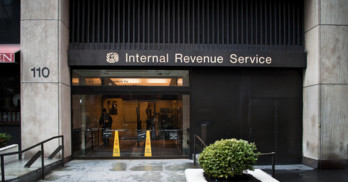
Business leaders are looking ahead at the new year hopeful for new opportunities, but wary of the uncertainty that change brings. As the use of contingent labor continues to grow, one of the most important topics for business leaders to explore and understand will be labor-law compliance. While there are incredible benefits to using an on-demand workforce, if your workforce is poorly managed, the cost of worker misclassification can be detrimental to your business.
Last year, a number of leading businesses experienced a surge of lawsuits alleging worker misclassification. Here’s a quick recap of recent highest-profile cases:
Amazon’s drivers recently filed a class-action lawsuit in Seattle claiming the company violated federal labor laws by classifying them as independent contractors rather than employees.
Uber was slammed with a $100 million settlement for a similar misclassification claim with their drivers.
FedEx agreed to pay $240 million to settle a lawsuit filed by delivery drivers in 20 states, who were also claiming they had been misclassified as independent contractors.
While the rising legal retribution can be eye-popping to many businesses, it’s important to understand this simple fact: businesses are protected if they ensure their on-demand workforce is properly managed and compliant.
Here are the four ways that businesses can mitigate their risk as they embrace the benefits of the gig economy in 2017:
1. Don’t hold independent contractors to a set rate without any room for negotiation.
In Uber’s recent misclassification case, contractors were not able to negotiate their rates, but were rather paid according to specific rates set by Uber. Similarly, in the Amazon case, it was claimed that contractors had to follow Amazon’s instructions regarding their routes.
Do: Contractors are allowed to negotiate their rates and set their own schedules. Rates can be negotiated, but in the agreement, make sure to communicate that they have the control over their financials and schedule as long as the work gets done.
2. Don’t apply employee processes to your contractors; they need to be different.
In the FedEx case, contractors were told to report to FedEx terminals at certain times for sorting and packing, and could not leave the terminal until the process was complete. Likewise, in the Amazon and Uber cases, the contractors were subject to each company’s internal requirements, including termination or penalties at the company’s discretion.
Do: Only full-time employees should be subject to a company’s internal rules and policies. It is important to create a distinction between a contractor and full-time employee by explicitly acknowledging in your agreement that the independent contractor will not receive any full-time employee benefits nor be subject to internal policies. If you are concerned about specific behaviors that could affect your clients, independent contractors can be verbally instructed with a Code of Conduct, a set of rules that your business can define. Stay even more protected by providing a mutual termination for convenience clause in the agreement.
3. Don’t limit your contractor’s’ ability to work for other companies.
FedEx exercised complete control over their independent contractors’ ability to solicit additional customers or work for other companies.
Do: Engage independent contractors through public (i.e. freelance) marketplaces. This will indicate in a court of law that the independent contractor is in fact not exclusively working for your company, but rather has multiple clients. If you are concerned about confidential information or business practices that could potentially leak to competitors, consider having contractors sign an NDA, and ensure that their exposure to your company’s sensitive information is limited.
4. Don’t reimburse the independent contractor’s expenses.
FedEx did not directly reimburse its independent contractors for their business expenses. However, the company was intricately involved in purchasing equipment and supplies, and then leasing and/or financing them to its contractors. This indicated a level of control that the courts interpreted as employer-employee relationship. Similarly, in the Uber case, contractors were obligated to pay car payments and maintenance, as well as Uber’s surcharges from their pay.
Do: The non-reimbursement rule indicates that an employer should not become involved in the supplying, leasing, or financing the supplies needed to do the job. Businesses can address this concern in the legal agreement by stating the high-level requirements needed for the project. This serves as a signed acknowledgment that the contractor understands the quality of work required when doing work for your business.
FedEx, Uber, and Amazon (as well as a slew of others, such as Lowe’s and Google), demonstrates critical lessons for any business utilizing freelancers and independent contractors as part of their workforce. As labor laws continue to evolve state-by-state, it is the responsibility of every executive and manager involved in managing extended labor to educate themselves and continue learning from the mistakes of other businesses.
To learn more about best practices for properly managing your extended workforce, download our business guide to freelancer trends and best practices!


